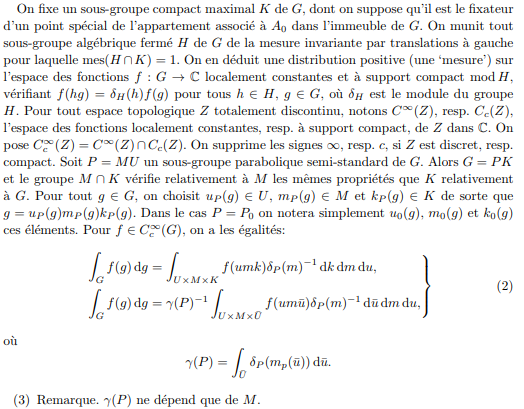Let $G$ be a connected, reductive group over a $p$-adic field. Let $A_0$ be a maximal split torus of $G$ and $P = MU$ a parabolic subgroup with Levi $M$ containing $A_0$, and opposite parabolic $\overline{P} = M \overline{U}$. I'm trying to understand where the integration formula
$$\int\limits_G f(g) dg = \gamma(P)^{-1} \int\limits_P \int\limits_{\overline{U}} f(p \bar{u}) d\bar{u} d_lp$$
comes from, where $\gamma(P) = \int\limits_{\overline{U}} \delta_P(m_p(\bar{u})) \, d\bar{u}$. This is claimed in writeup (page 6) by Waldspurger on Harish-Chandra's unpublished notes on the Plancherel formula for $p$-adic groups, in the second equality of (2).
I know that the product map $U \times M \times \overline{U} \rightarrow G$ gives an open immersion into $G$. So the right hand side of this equality seems like it is integration over some open set in $G$. When $P$ is minimal, I believe this open set is dense. Can the second equality in (2) be derived from the first equality?

